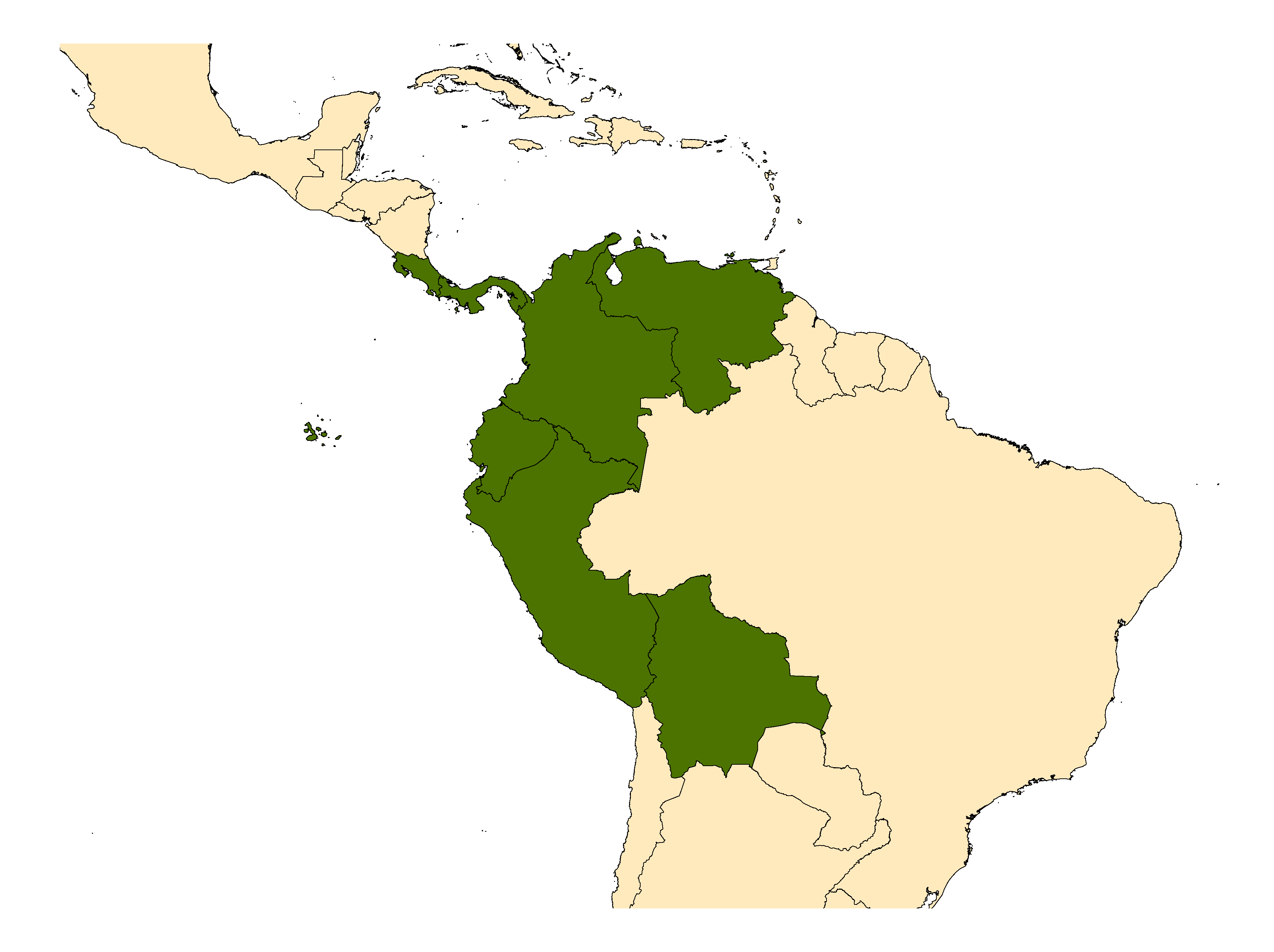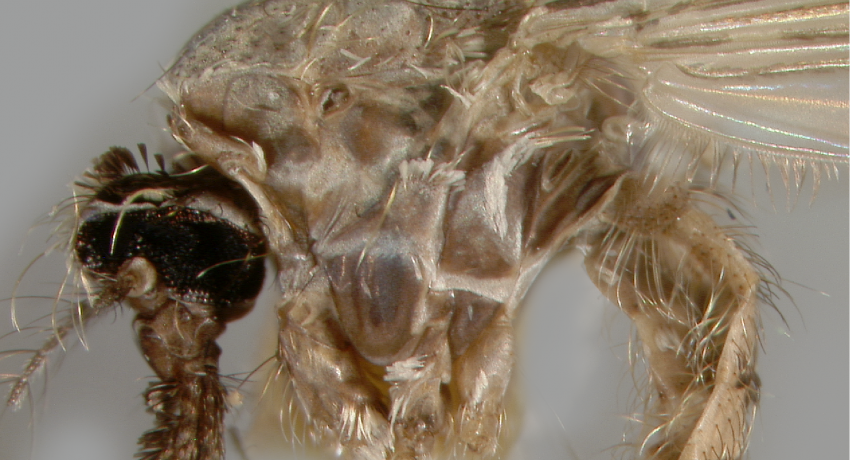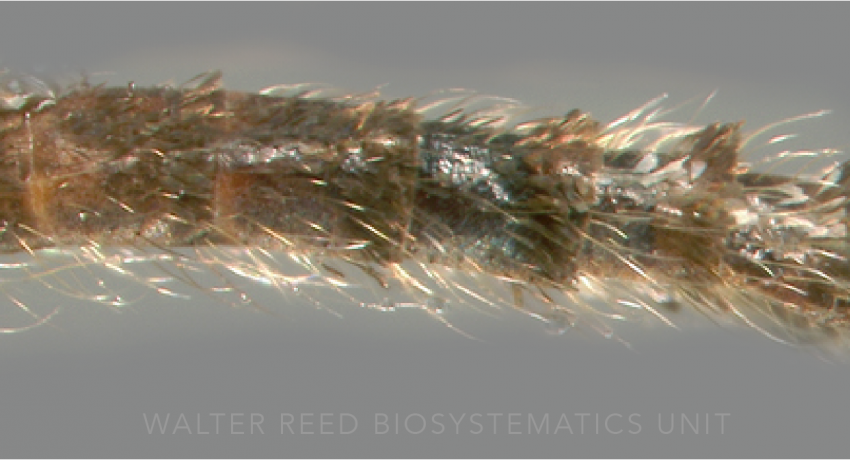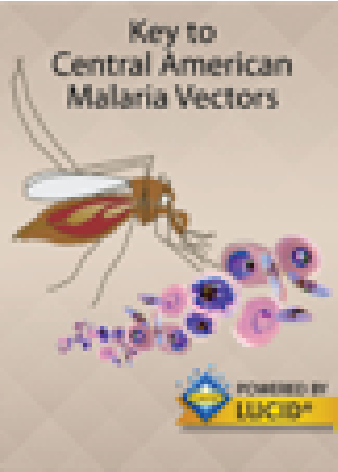NEOTROPICAL REGION
Etymology: clad in scales (Gr)
Anopheles pholidotus and An. lepidotus Zavortink were both described in the same paper. However, the formal descriptions and illustrations of the female were inadvertently switched in the publication, leading to several years of taxonomical confusion, and the incorrect incrimination of An. lepidotus as a primary malaria vector in Latin America. Subsequently careful laboratory rearing of both species combined with molecular verification clarified the situation, and resulted in the corrected assignment of An. pholidotus as the malaria vector, not An. lepidotus. Some earlier records attributed to An. boliviensis (Theobald) are infact An. pholidotus.
Type locality: La Zorra, Bocas del Toro, Panama
Type depository: U.S. National Museum, Washington, D.C., United States (USNM)
DIAGNOSTIC CHARACTERS (Click photos to view; mouse over and click large photo to zoom in.)
ADULT (illustrated): Head: Palpomeres MPlp2–5 with apical white bands. Thorax: Mesepimeron with one long ventrally projecting "C" shaped row of long white scales; scutal integument silvery pruinose with four dark longitudinal stripes. Wing: Accessory sector pale spot near middle of costa, nearly equidistant between sector pale and subcostal pale spots; vein M1 with pale fringe spot adjacent to tip. Legs: Ta-III1,2 with narrow apical white bands from dorsal view. Abdomen: Segments V–VII-Te with distal transverse rows of long erect dark scales.
LARVA (not illustrated): Head: Seta 3-A long and tapered, much longer than 2-A; seta 3-C moderately long, slightly more stout than 2-C, with long attenuated tip. Thorax: Seta 11-P moderately developed, long. Terminal segments: Pecten with two rows of spinules on each spine. Abdominal segments: Seta 1-I long, single; seta 1-II–VI palmate, brush-like; seta 6-VI with several strong basal branches; seta 9-IV–VI single.
TAXONOMIC KEYS
Harrison et al. 2012
Sallum, et al. 2020
![]()
Anopheles – Central America - Adult
![]()
Anopheles – Central America - Larva
![]()
WRBU - Genera - Global - Adult
![]()
WRBU - Genera - Global - Larva
![]()
WRBU - Genera - Neotropical - Adult
![]()
WRBU - Genera - Neotropical - Larva
Exemplar DNA sequences
An. pholidotus COI: JQ041287-88, MH843473; ITS2: JN967768-70.
BIONOMICS
Immatures
Little is known about An. pholidotus with regard to its true biology due to it taxonomically complicated past. As for most other Kerteszia species, the preferred immature habitat is in the rainwater collections within the bracts of bromeliads.
Adults
High population densities of molecularly-confirmed An. pholidotus were collected in forest environs, and in human landing collections conducted both inside and around houses in a malaria foci in Cunday-Villarrica, Tolima, Colombia. Anopheles pholidotus is a major malaria vector, whereas An. lepidotus is rare and of no biomedical importance. Anopheles pholidotus are also mechanical vectors of the eggs of the human bot fly, Dermatobia hominis.
DISTRIBUTION NOTES
Bolivia, Colombia, Costa Rica, Ecuador, Panama, Peru, Venezuela.

WRBU VECTOR HAZARD REPORTS
None; View other WRBU Vector Hazard Reports
Available GIS Models:
None
IMPORTANT REFERENCES (full citations below)
Zavortink 1973: 15 (M*, F*, P*, L*)
Harrison et al. 2012 (M, F, P, L; key, distribution; Bolivia, Colombia, Ecuador, Venezuela)
Parker et al. 2012 (bionomics, distribution; Peru)
Escovar et al. 2014 (M*, F*, L*; molecular taxonomy, bionomics, distribution; Colombia, Costa Rica)
Sallum, et al. 2020 (keys F, M, L)
CURRENT SYNONYMS
None
CITED REFERENCES
Escovar, J.E., González, R., Quinones, M.L., Wilkerson, R.C., Ruiz, F., & Harrison, B.A. (2014). Morphology of the larvae, male genitalia and DNA sequences of Anopheles (Kerteszia) pholidotus (Diptera: Culicidae) from Colombia. Memórias do Instituto Oswaldo Cruz, 109(4), 473-479.
Harrison, B.A., Ruiz-Lopez, F., Calderon Falero, G., Savage, H.M., Pecor, J.E., & Wilkerson, R.C. (2012). Anopheles (Kerteszia) lepidotus (Diptera: Culicidae), not the malaria vector we thought it was: Revised male and female morphology; larva, pupa, and male genitalia characters; and molecular verification. Zootaxa, 3218, 1–17.
Parker, D.M., Zavortink, T.J., Billo, T J., Valdez, U., & Edwards, J.S. (2012). Mosquitoes and other arthropod macro fauna associated with tank bromeliads in a Peruvian cloud forest. Journal of the American Mosquito Control Association, 28(1), 45–46.
Sallum, M.A.M., Obando, R.G., Carrejo, N. et al. Identification key to the Anopheles mosquitoes of South America (Diptera: Culicidae). Parasites and Vectors, 13, 542 (2020). https://www.biomedcentral.com/collections/id-keys-anopheles
Zavortink, T.J. (1973). Mosquito studies (Diptera, Culicidae) XXIX. A review of the subgenus Kerteszia of Anopheles. Contributions of the American Entomological Institute, 9(3), 1–54.
CITE THIS PAGE
Walter Reed Biosystematics Unit (Year). Anopheles pholidotus species page. Walter Reed Biosystematics Unit Website, http://wrbu.si.edu/vectorspecies/mosquitoes/pholidotus, accessed on [date (e.g. 03 February 2020) when you last viewed the site].














































































































































































